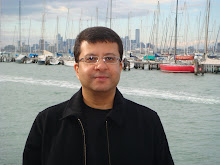Silicon Valley. According to a recent report, the region, the center of the global technology industry, lost 90,000 jobs from the second quarter of 2008 to the second quarter of 2009. Unemployment is higher than national levels and the worst in the region since 2005, when technology companies were still recovering from the dot-com implosion. Does this spell the beginning of the end for Silicon Valley?
Industrial clusters are capable of generating self-sustaining economic growth because they are essentially interdependent beehives of economic activity where ideas, infrastructure, and technology are being continuously shared, challenged, and serendipitously recombined to yield entirely new strains of industrial DNA in the form of breakthrough products, processes and services. To continue with the biological metaphor, it is the network of interconnections among them that transforms a cluster of firms into a “super-organism” that functions as an economic dynamo that is greater than the sum of its parts, throbbing with ideas and resilient to economic vicissitudes.
Silicon Valley is an example of such a high-performance industrial cluster. Other examples are Research Triangle in North Carolina, Route 128 in Boston, and Fairfax County in northern Virginia. These clusters are an agglomeration of firms in related products. These firms have knowledge and technology spillovers between each other and benefit from shared fixed costs of infrastructure and R&D, which translate into economies of scale and scope.
Once the density of these interactions and synergies between firms cross a threshold, a self-reinforcing feedback cycle is ignited, and an industrial cluster continually attracts more firms, talent, and capital. Since there is a “threshold effect” before the self-reinforcing virtuous cycle takes off, and this threshold is hard to quantify or pin down, such clusters are fiendishly difficult to replicate by design.
One could argue that Silicon Valley has been a victim of its own success. Because it has been extremely successful in creating products that have become so useful and popular that they have become standardized, it is now possible to outsource these products to other parts of the world, such as India, China, Israel and Estonia. We could say that current downturn in the Valley is in large part the result of the relentless pursuit of greater efficiencies and lower costs, a process that was already underway but has been amplified by the recession.
There is reason to expect that Silicon Valley will rebound. Studies of cities and regions that have gone through waves of creative destruction but have reinvented themselves (Chicago, Boston, New York, London) indicate that a key ingredient to economic resilience is large and deep pools of human capital (skills, education, talent, experience). Cities with high levels of human capital have emerged from downturns in new incarnations with new products and clusters (software to biotech for example in Boston). High levels of human capital lead to flexibility and the capability to take advantage of whatever current opportunities are. To use another biological metaphor, human capital is like a stem cell which can adapt and morph into new products and knowledge.

No comments:
Post a Comment